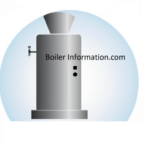The steam drum is an essential component of an industrial boiler that serves the purpose of separating steam from water. It is typically located at the top of the boiler and is usually one of the largest components. The steam drum is responsible for monitoring and regulating the pressure within the boiler and collecting and separating the steam and water.
The steam drum is typically cylindrical in shape and contains two separate chambers. The top chamber is the steam space and is filled with steam. This steam is used to power the turbine and other machinery. The bottom chamber is the water space and is filled with the water and any sediment that has settled out of the circulating boiler water.
When water is heated in the boiler, it turns into steam and rises to the top of the steam drum. The steam is then directed to the turbine and other machinery, while the water and sediment collect in the bottom chamber. The steam drum also serves as a pressure regulator, as the amount of steam and water inside the drum is constantly monitored to ensure the proper pressure is maintained.
When the pressure inside the boiler is too high, some of the steam is released from the drum and vented to the atmosphere. This lowers the pressure in the boiler and helps to keep it from exploding. On the other hand, when the pressure inside the boiler is too low, additional water is added to the steam drum to increase the pressure.
The steam drum also contains a number of devices such as sight glasses, steam traps, blowdown valves, and level controls. The sight glasses are used to visually inspect the boiler water level, while the steam traps and blowdown valves are used to release any excess steam and water. The level controls are used to monitor and maintain the proper water level inside the boiler.
The steam drum plays a vital role in the operation of an industrial boiler and is responsible for ensuring the safe and efficient operation of the boiler. Without it, the boiler would not be able to operate safely and efficiently.
